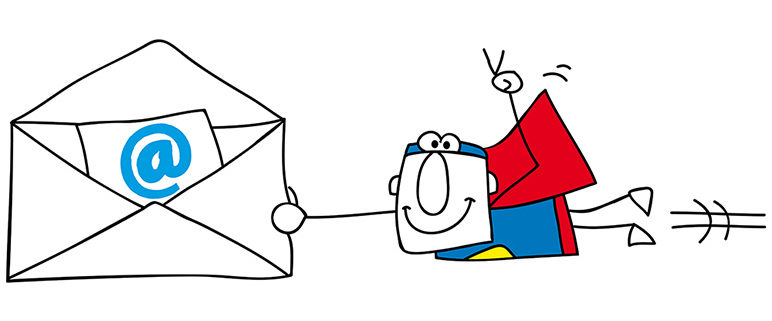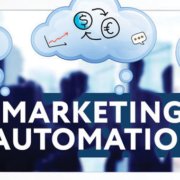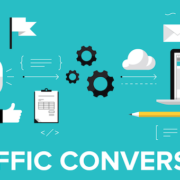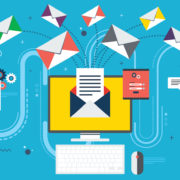Senior Living Lead Generation: Create Better Lead Nurturing Emails
Congratulations! Your senior living lead generation is WORKING! You’ve enticed anonymous websites to give you their contact info, thanks to compelling content offers.
Now what?
Make sure you’ve set up your website forms to support a strong senior living lead generation program.
Any form on your senior living website should gather basic info: first name, last name, email, and state. But it should also ask two required questions that will provide further valuable insights.
First, ask something like this: “Are you gathering this info for yourself or a loved one?”
A drop-down would appear with these choices:
- I’m looking for myself.
- I am an adult child looking for a parent.
- Other
You’re keeping the options simple here, because you don’t want to overwhelm people with questions. And you don’t want to create overly complicated lead nurturing paths, either. (More on this in a moment.)
Second, ask something along these lines: “What’s your timeline for making a decision about senior living?”
A drop-down would appear with these choices:
- ASAP
- 3-6 months
- 6-12 months
- 12-24 months
- No timeline—just researching
Again, you’d don’t want to overwhelm visitors with too many choices. And you don’t want to complicate the lead nurturing paths you set up.
Now that you’ve set up proper lead forms, you can think about the next steps.
Lead nurturing best practices: Turbocharge your senior living lead generation program.
1. Score and segment your senior living leads.
See? Everything we recommended earlier with the website forms serves a purpose. By allowing your prospects to self-identify who they are and where they are in their journey, you can score and segment your senior living leads accordingly: marketing-qualified leads (MQLs) and sales-qualified leads (SQLs).
For example, an adult child who is looking to make a decision for her mother ASAP should be funneled directly to the sales team for immediate follow up. This is a classic SQL.
But you can place anyone who chooses one of the other timelines into a longer-term lead nurturing workflow. This way, you can nurture these “not ready yet” leads, or MQLs. The goal involves staying in front of them so that when they ARE ready, they will think of your community first.
Depending on your internal resources at the outset, you can drill down deep into the lead nurturing “logic.”
So, let’s consider someone who is researching senior living for herself. If she is making her decision ASAP, she will become an SQL and go to sales. But if she chooses one of the following timelines, she’ll be considered an MQL primed for nurturing:
- 3-6 months
- 6-12 months
- 12-24 months
Now, here’s the thing: You’ll need to create a separate set of lead nurturing emails for each timeframe.
For example, if the person conducting her own research enters the 3- to 6-month workflow, she would receive one set of emails. Another person entering the 6- to 12-month workflow would receive a different set. And so forth.
Yes, some of the emails in each set might be similar—or even identical.
Remember, you want to personalize the emails so that they match where the person is in their buying journey. An adult child researching options for her dad to move in 18 months is in a very different place from an eighty-year-old woman needing to move by the end of the year and researching for herself.
If you’ve been thinking, “Gee, that sounds like a lot of emails we need to write and set up,” you’re correct!
But, again: some emails will work in all of your lead nurturing campaigns. And others might only require a few tweaks. Plus, once you do the initial set-up, it becomes an extremely easy program to manage and even tweak, provided you use marketing automation, which brings us to our next best practice . . .
2. Use marketing automation for your senior living lead generation.
Your senior living sales and marketing teams don’t need to manually score leads, segment them, and send the emails. Marketing automation takes care of it. This way, the sales and marketing teams can focus on the RESULTS, specifically the analytics, so they can respond accordingly.
And it goes without saying, but most leads should change from MQL to SQL over time. At least, that’s the goal.
For example, let’s say a prospect in the “I’m an adult child researching for a parent in the next 6-12 months” category is opening your emails, downloading content, and spending more time on the site. You can change the lead score from marketing qualified to sales qualified. (And if you have a robust marketing automation system, you can program it to automatically make this change based on the lead behavior). Now, the sales team can follow up directly with the lead since the person appears to be super interested.
Bottom line: A good lead nurturing program helps salespeople focus on the best opportunities. And it helps the marketing team understand which types of emails and content drive conversions. Armed with this information, the marketing team can focus on creating more content like it.
3. Follow email marketing best practices.
Like everything else, email marketing best practices evolve. But certain evergreen practices will always remain true:
- Pay attention to grammar, punctuation, and spelling. Nothing yells amateur like careless mistakes.
- Shorter is almost always better. First, leave long-form copy to your guides and e-books. Second, keep emails short and highly skimmable.
- Make your emails mobile responsive. More and more people are reading emails on smaller devices like tablets and phones. (Yes, this includes older adults.) Test your emails on a variety of devices. Some marketing software, like HubSpot, bakes this feature into its platform.
- Keep subject lines succinct. MailChimp recommends no more than nine words or 60 characters.
- Send the email from a real person. You don’t want to make it look auto-generated by having a [email protected] email.
Remember, make it about the buyer. Don’t lead by talking about your community. Think about the pain points the person might be experiencing. How can you solve for these pain points? Offering a piece of helpful content is a great place to start.
As for current email marketing trends, here are some to consider testing:
- Personalization. Emails that include a person’s name in the subject line have a 29% higher unique open rate and 41% more unique click-through rates.
- Experiment with emojis (but still use sparingly). Emojis are a popular trend right now, and mileage varies widely. But you could test subject lines with one emoji.
For example, if one of the emails in your lead nurturing set includes inviting someone to have lunch at your community, your subject line could be something playful: Lunch on us! WE HAVE CAKE! (Then, include a cake emoji 🍰).
Test and see if the subject line with the emoji improves open rates, but also keep in mind that open rates are just ONE metric. Conversions are what matter most. In other words, do you get more people requesting lunch when you use a subject line with an emoji? THAT is what you need to pay attention to.
4. Don’t set it and forget it.
Marketing automation makes life easier because it reduces the manual labor. But you still have to use your noggin and regularly review the analytics and make smart decisions based on what the numbers are telling you.
You also need to make adjustments to lead nurturing emails when something unexpected happens. For example, if you run any lead nurturing campaigns right now, you’d be remiss if you didn’t acknowledge the pandemic.
5. Seek help with your senior living lead generation when you need it.
Setting up a well-designed senior living lead generation program doesn’t just happen. And not every marketing or sales team has the requisite skill sets. Working with a reputable senior living marketing agency that has experience in lead generation can save you time and money.












